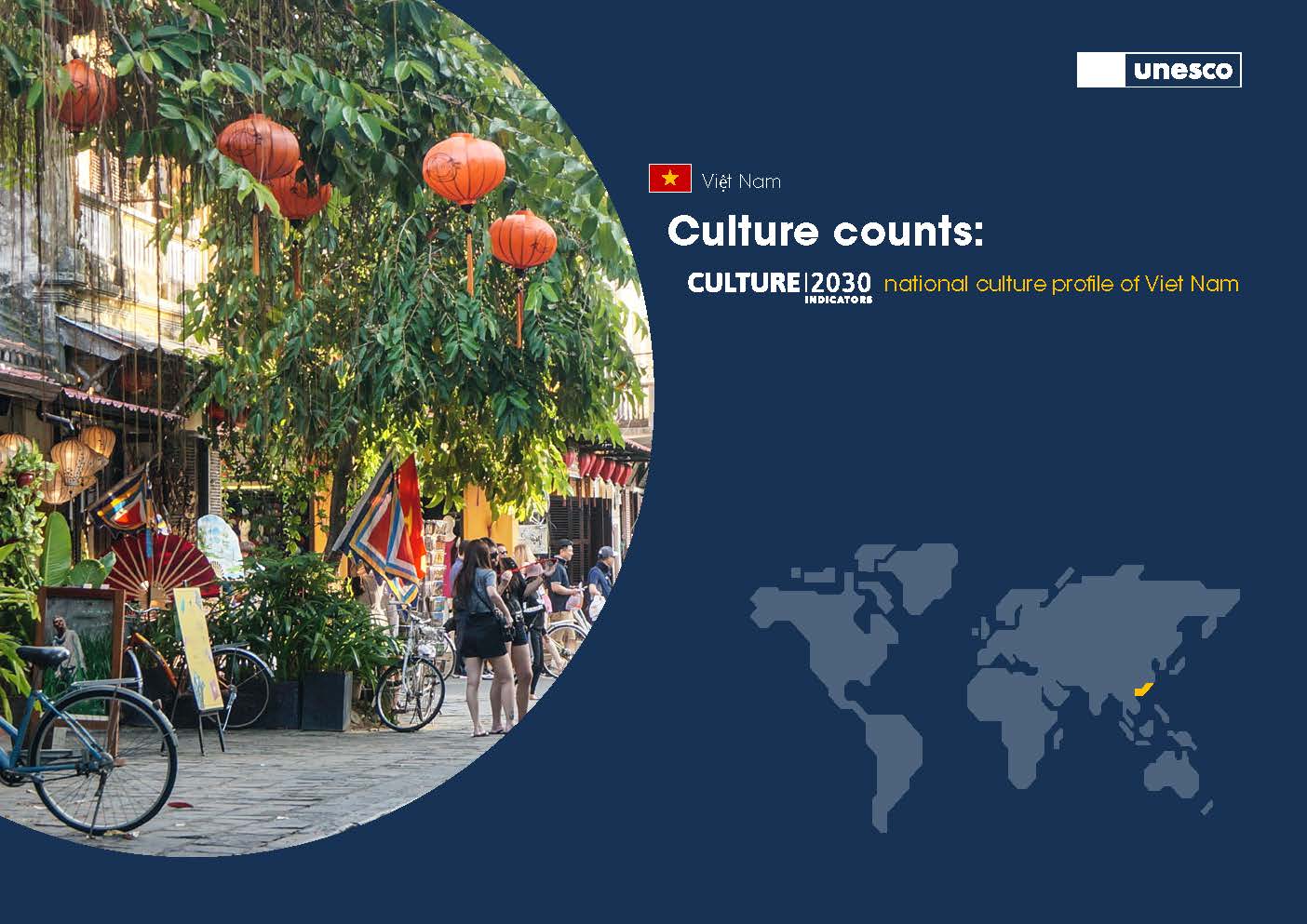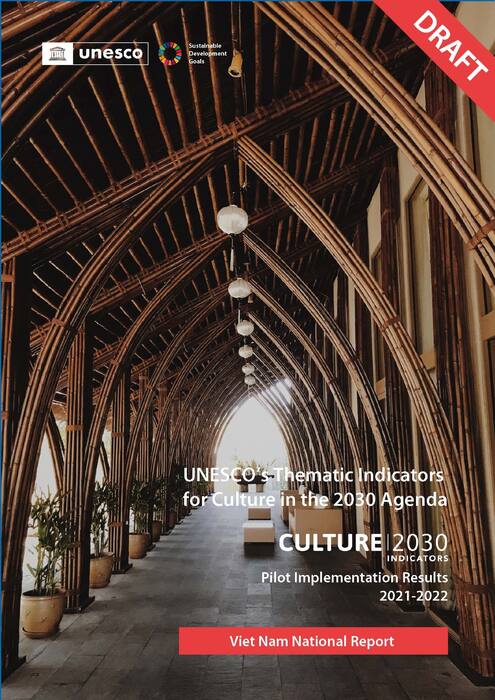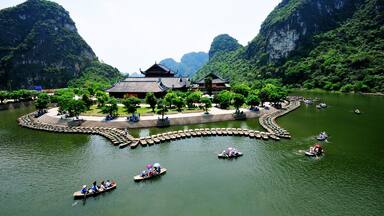The city of Hue’s vision is to become one of the major centres of Southeast Asia in culture, tourism and healthcare, one of the country’s major centres in science and technology, and high-quality multidisciplinary education by 2030 and then by 2045; the city of Hue targets to become a world-famous festive city. These aspirations are in line with the comprehensive plans of the Thua Thien province, looking at integrating sustainable development goals into the socio-economic vision. The city plans to realise that vision by upgrading and developing the city of Hue into a 1st-tier city operating directly under the central government like Hồ Chí Minh City (HCMC) and Hanoi, to develop tourism as a key economic sector, information and communication technology as ground-breaking sectors and industry and high-tech agriculture as founding sectors. For the city authority, the city of Hue’s sustainable development can only be realised if it anchors its development on the preservation and promotion of its heritage and its cultural identity, enhancing its distinctive characteristics in culture, heritage, ecology and landscape, being innovative and environment-friendly.
Urban-level implementation was led by the Hue office of the Vietnam National Institute of Culture and Arts Studies with the collaboration of Thua Thien – Hue Province Department of Culture & Sports Department of Education and Training. The implementation in the city of Hue spanned from November 2021 to July 2022. It took place alongside the national-level implementation led by the Vietnam National Institute of Culture and Arts Studies, a research institution under the Ministry of Culture, Sports and Tourism.
The implementation team was accompanied by UNESCO, and a kick-off workshop was organised in November 2021, gathering over 24 stakeholders and 42 participants, including representatives from the national and local authorities, as well as civil society organisations, academies, private sector, and other competent entities whose work is informed by culture. The urban-level implementation benefited from the valuable contribution of participants from the Department of Industries and Commerce, the Department of Tourism, the People Committee of Hue City, the Hue Institute for Development Studies, and the Hue Festival Center. The General Office of Statistics of Viet Nam and the Statistic Office of Thua Thien Hue Province were key technical partners and data providers in constructing the indicators. Implementation concluded in July 2022 with the organisation of a restitution workshop to present and validate the implementation results, share key messages, and make visible culture’s contribution to sustainable development. It also promoted results dissemination to encourage policy action and advocated for stakeholders' commitments to strengthen data collection, measurement, and monitoring for culture.
Culture Counts: Culture|2030 Indicators urban culture profile of Alajuela

For the first time, a publication series titled 'Culture counts: The Culture|2030 Indicators Culture Profiles' uncovers and offers evidence of the profound impact of culture on sustainable development. Read the issue for Hue.
Culture|2030 Indicators urban report of Alajuela

The summary results, key findings, analysis, and recommendations are based on the field document titled 'Culture|2030 Indicators National Report of Hue'.
Expenditure on heritage
The city of Hue spends $40.6 on heritage, 40 times more than the national average.
Sustainable management of heritage
Traditional architecture and practices are essential for the city of Hue, with many supporting initiatives.
Climate adaptation & resilience
The city of Hue has a disaster reduction plan and policies to support climate adaptation.
Cultural facilities
Private cultural facilities are increasing while public facilities are not well maintained.
Open space for culture
Open spaces for culture are concentrated on both sides of the Huong River and the area of Hue Citadel. The river itself is a major scene for cultural activity.
Culture in GDP
There were limited data on culture and gross domestic product (GDP).
Cultural employment
There were limited data on cultural employment.
Cultural businesses
Cultural businesses stood at 10% of total businesses and increased slightly despite the COVID-19 pandemic.
Household expenditure
There are no data for this indicator.
Trade in cultural goods & services
National level indicator. No data is available at the city level.
Public finance for culture
The public budget per capita in the city of Hue is 27 times the national average.
Governance of culture
Policies in the city of Hue concentrate on traditional practices.
Education for Sustainable Development
See national results.
Cultural knowledge
The school system included a variety of teachings on heritage and sustainable development.
Multilingual education
In the city of Hue, the Local secondary education curriculum includes English and two local languages.
Cultural & artistic education
Languages are the most important cultural element in secondary education.
Cultural training
Data were only available for post-secondary courses outside the university. Subjects chosen were divided very much on gender lines.
Culture for social cohesion
National level indicator. No data is available at the city level.
Artistic freedom
National level indicator. No data is available at the city level.
Access to culture
Cultural facilities tend to be concentrated in the city centre.
Cultural participation
There is limited data on cultural participation. Library activity increased despite the COVID-19 pandemic.
Participatory processes
National level indicator. No data is available at the city level.
-
Cultural heritage is a major focus of the city of Hue’s cultural policy. Counting 92 relics (50% of the Thua Thien Hue province) and 5 UNESCO World Heritage assets, the city of Hue’s public expenditure for heritage amounts to 40.58 PPP$ per capita, 40 times higher than the national average (1).
-
Patrimonialisation, conservation and management initiatives from the city further prove the city of Hue’s deep care of its cultural heritage (2). For instance, Hue’s Bao Vinh ancient town has been recognised, mapped, and protected strictly by the city.
-
The city has taken various measures to improve its ability to adapt and cope with climate change, including the Action Plan to respond to climate change in Thua Thien Hue province of 2021 – 2031 with a vision for 2050, including specific measures for heritage (3).
-
The city’s cultural life is enriched by 1,005 cultural facilities – primarily concentrated in the downtown area of the historic town (20) – among which 935 traditional cultural spaces (4). While museums and libraries are well represented, there are also seven creative hubs to support creative businesses. ‘Traditional cultural spaces’ tend to be open spaces (5), often associated with temples and other community facilities. Such facilities also have a prominent role to play in hosting performances of various kinds. In common with many Asian countries, the river constitutes a space for cultural use. Major festivals occur on the river, while the riverbanks are also the site for many cultural activities.
-
There is a significant lack of economic data for the city of Hue (6), (7), (8), as there is little information about commercial activities outside of those related to public services for citizens (e.g., libraries) and tourists. Some creative businesses have established themselves in the city, but it isn't easy to know their full impact.
-
Education systems in the city of Hue follow the national model with a certain freedom to include local languages (15) and thus acknowledge local culture, including artisans and performing artists' role in fostering sustainable development (14). Higher education in cultural topics attracts almost twice as many women as men (17).
-
There is a lack of data on cultural participation (21), which would be essential to allow policymakers to determine the priorities and cultural needs of local people and visitors.
Concepts of sustainable development lie at the core of the UNESCO Culture Conventions and programmes, each of them bringing a specific perspective or focus in line with its individual scope and conceptual framework. With the adoption of the 2030 Agenda, all of the Conventions have incorporated relevant SDGs within their implementation and monitoring mechanisms by aligning their concepts and identifying specific SDGs or Targets to be integrated into their results framework.
The UNESCO Culture|2030 Indicators framework integrates data from reporting on UNESCO Culture Conventions and programmes. Periodic reporting is one of the core monitoring mechanisms of the UNESCO Culture Conventions. The date of Viet Nam’s participation in UNESCO reporting is recorded by last submission in the timeline below.
Date of participation in UNESCO Reporting by last submission.
Convention for the Protection of Cultural Property in the Event of Armed Conflict and its two protocols
Convention on the Means of Prohibiting and Preventing the Illicit Import, Expert and Transfer of Ownership of Cultural Property
Convention Concerning the Protection of World Cultural and Natural Heritage
Convention on the Protection of the Underwater Cultural Heritage
Convention for the Safeguarding of the Intangible Cultural Heritage
Convention on the Protection and Promotion of the Diversity of Cultural Expressions
Recommendation concerning the Protection and Promotion of Museums and Collections, their Diversity and their Role in Society
Recommendation on the Historic Urban Landscape
Recommendation on the Status of the Artist
Culture's transversal contribution towards the 2030 Agenda is captured in the framework on page 2. In Viet Nam, culture's direct contribution in achieving progress towards the targets of the 2030 agenda is summarized in the following highlights.

Sustainable cities and communities
SDG 8.3: Jobs, entrepreneurship & innovation
SDG 8.9: Policies for local cultural products and sustainable tourism
The city is diversifying with more investment in creative industries, including the formation of incubators for creative start-ups (4) and a move towards expanding more entrepreneurial private sector businesses, demonstrating culture’s role as a driver of job creation, entrepreneurship and innovation SDG 8.3.
The city of Hue has identified local cultural products and tourism as the pillars of its economic development (6), (7), (8), translating this into policies and enforcing it through planning (2), (12), contributing actively to SDG 8.9.

Sustainable cities and communities
SDG 11.4: Cultural & natural heritage
SDG 11.7: Inclusive public spaces
Cultural heritage is a priority of the city of Hue’s cultural policy, with a high public expenditure on heritage (1). The various actions, fundings and partnerships related to the World Heritage Site translate into actions in support of SDG 11.4 to strengthen the efforts to protect and safeguard cultural and natural heritage.
In the city of Hue, public open spaces are intertwined with the population's daily lives (5). The number and diversity of public open spaces, particularly the river itself and its banks, contribute to creating safe, inclusive, and accessible public spaces supporting SDG 11.7.
Many public actions have been undertaken to ensure the conservation and sustainable management of heritage (2), (12), including measures specifically aimed at disaster risk reduction addressing SDG 11.b; in 2021, the city of Hue took Decision No. 1720/QD-UBND on "Upgrading and renovating the infrastructure system, works, cultural and historical monuments, sports facilities to improve resilience to climate change and to build tourism products adapted to climate change.”
Policy
- Unlock the economic potential of traditional arts and cultural heritage beyond cultural tourism (6), (7), (8). The city of Hue’s diversified traditional performing arts, cuisine, tangible heritage and craft have not been promoted and utilised as high market-valued cultural products and services in some cultural industries, such as design, media arts, films, cuisine, and fashion, to create more diversified revenue-generating sources.
- Invest more in policies related to cultural and creative industries, especially to encourage the development of small and medium-sized cultural enterprises, exploit potential cultural values in the community, and create new cultural opportunities. All this will strengthen the dynamism of the city of Hue cultural market.
- Develop policies to increase workers in handicrafts and train highly qualified human resources in Information and Communication Technologies (ICTs), especially as the city of Hue shifts its economy towards digital creativity and innovation.
- Extend public cultural facilities outside the centre on a permanent or ad hoc basis to increase access to cultural activities for everyone in the city (4), (20), and (21), and so support the broad local creative and artistic community for which the city of Hue is justifiably famous.
- Improve interdisciplinary coordination among key stakeholders in the city’s administration, policy-making and strategy development (12).
Data
- The city of Hue should develop a property database to have a clear overview of heritage properties and creative businesses (8).
- The city should convene a working group to assemble and assess the quality of available data on cultural participation (21). It could include administrative data gathered on visitors at key heritage sites, registered hotel visitors, and surveys based on street interviews.
- Implement regular capacity-building programmes for administrators and key stakeholders.
- Require businesses and civil society bodies to provide data to the city for civil registration (8).
